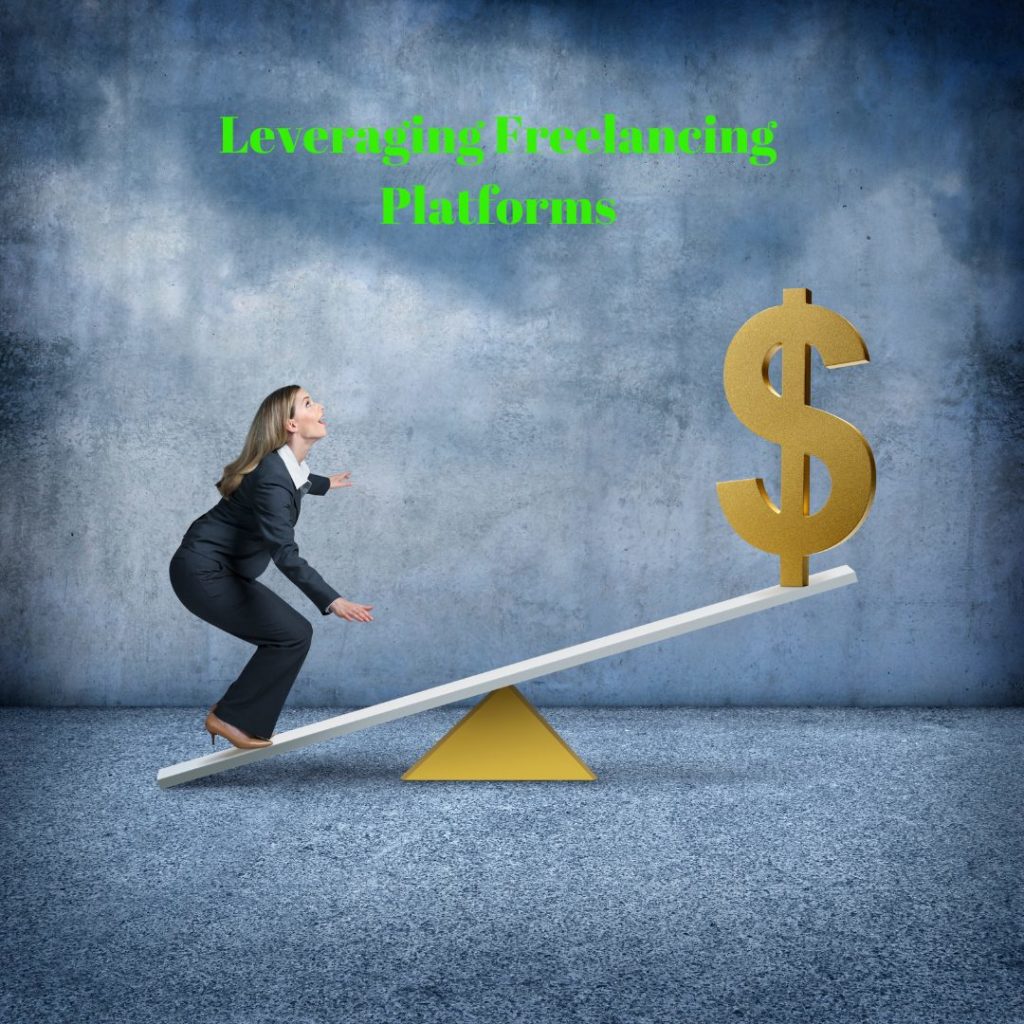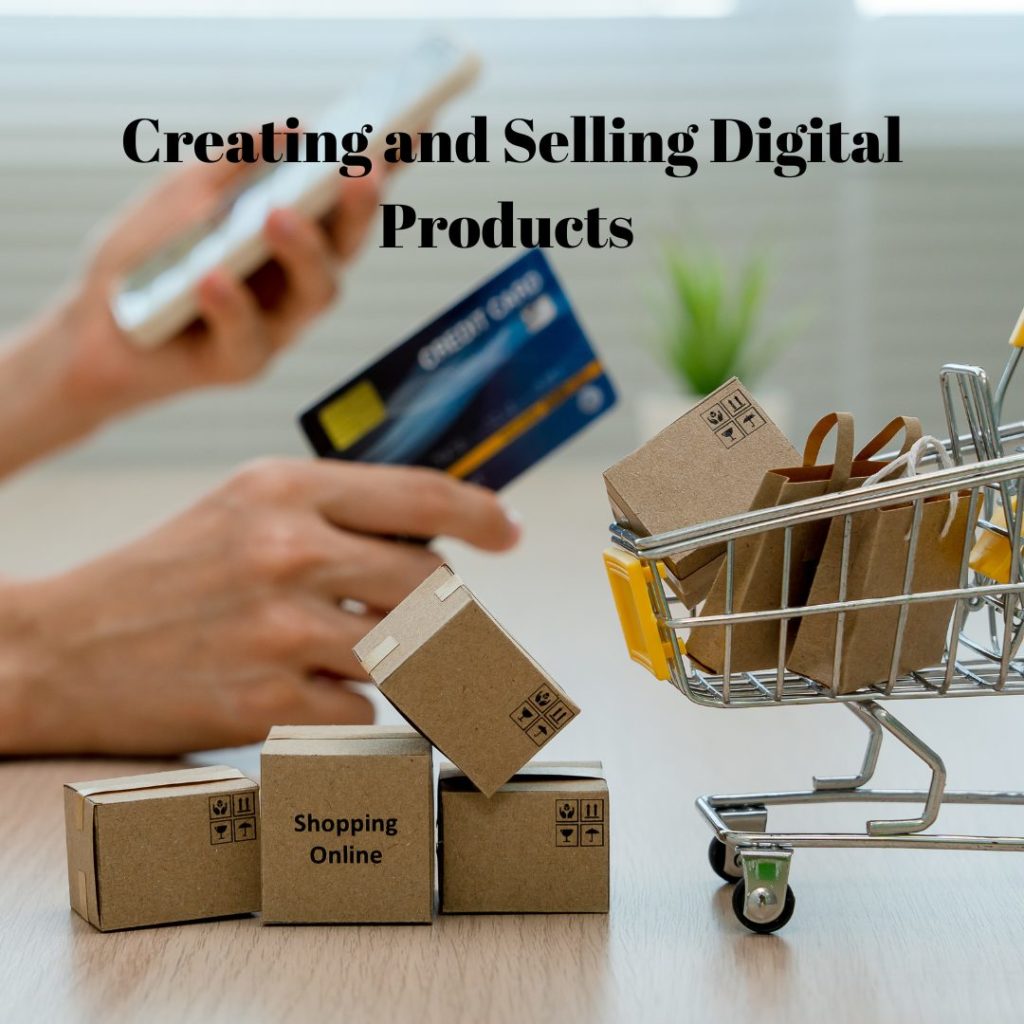Table of Contents
Introduction
A. Setting the Stage: The Allure of Making Money Online
In today’s digital age, the allure of making money online has captivated millions around the globe. The promise of flexible hours, unlimited earning potential, and the ability to work from anywhere has made the idea of online income generation immensely appealing. Whether you’re a stay-at-home parent, a student looking to supplement your income, or someone seeking financial independence, the Internet offers a plethora of opportunities to turn your skills and passions into profit.
B. Understanding the Landscape: Opportunities and Challenges
However, navigating the online money-making landscape can be daunting. With countless options available, ranging from freelancing and content creation to e-commerce and trading, it’s essential to understand the opportunities and challenges that come with each avenue. While the Internet presents boundless potential for entrepreneurship and wealth creation, it also requires diligence, adaptability, and a keen understanding of market dynamics.
C. Importance of Strategy: Making Informed Decisions
Amidst the vast array of possibilities, the importance of strategy cannot be overstated. Making informed decisions based on thorough research and a clear understanding of your goals is paramount to success in the online arena. Whether you’re just starting or seeking to optimize your existing ventures, having a well-defined strategy will help you navigate the complexities of the digital marketplace and maximize your earning potential. In the following sections, we’ll delve into various strategies and tactics to help you effectively capitalize on the opportunities available and achieve your financial objectives.
Leveraging Freelancing Platforms (Making Money Online)

A. Exploring Platforms: Upwork, Freelancer, Fiverr, etc.
Freelancing platforms like Upwork, Freelancer, and Fiverr offer a wealth of opportunities for individuals to showcase their skills and connect with clients from around the world. Each platform has its unique features, target audience, and set of rules and regulations. Understanding the nuances of these platforms is crucial for effectively leveraging them to your advantage. In this section, we’ll explore the key features of popular freelancing platforms and how you can best utilize them to kickstart your online freelancing career.
B. Crafting a Winning Profile: Tips for Attracting Clients
Your freelancer profile serves as your digital storefront, showcasing your skills, experience, and expertise to potential clients. Crafting a winning profile that stands out from the competition is essential for attracting high-quality clients and securing lucrative projects. In this section, we’ll discuss proven strategies for optimizing your freelancer profile, including choosing the right profile picture, writing compelling descriptions, showcasing your portfolio, and soliciting positive reviews and testimonials.
C. Maximizing Earnings: Navigating Bidding and Pricing Strategies
One of the most challenging aspects of freelancing is determining how much to charge for your services and navigating the bidding process. Pricing yourself too low can undermine your value and lead to burnout while pricing yourself too high can deter potential clients. In this section, we’ll delve into effective bidding and pricing strategies to help you maximize your earnings while remaining competitive in the freelancing marketplace. From setting competitive rates to negotiating contracts and upselling additional services, we’ll equip you with the tools and techniques you need to command top dollar for your freelance services.
Monetizing Your Skills through Content Creation
A. The Power of Content: Blogs, Videos, Podcasts, and Beyond
In today’s digital landscape, content is king. Whether it’s through blogs, videos, podcasts, or social media posts, creating valuable and engaging content has become a powerful way to connect with audiences and build a loyal following. In this section, we’ll explore the various forms of content creation and discuss the unique advantages and opportunities each medium offers. From the written word to visual storytelling and audio content, we’ll delve into the power of content creation as a means of monetizing your skills and expertise.
B. Building Your Audience: Strategies for Growth and Engagement
Building a loyal and engaged audience is essential for successfully monetizing your content. However, growing your audience and keeping them actively engaged requires more than just creating great content—it requires strategic planning and execution. In this section, we’ll discuss proven strategies for attracting and retaining followers, including leveraging social media, optimizing for search engines, collaborating with influencers, and nurturing community engagement. By implementing these strategies, you’ll be able to cultivate a dedicated audience that eagerly consumes your content and supports your monetization efforts.
C. Diversifying Income Streams: Ads, Affiliate Marketing, Sponsorships
While creating compelling content is a crucial first step, monetizing that content requires diversifying your income streams. In addition to traditional advertising, content creators have a variety of monetization options at their disposal, including affiliate marketing, sponsored content, digital products, and membership subscriptions. In this section, we’ll explore these various income streams in detail, discussing the pros and cons of each and providing practical tips for effectively implementing them into your content monetization strategy. By diversifying your income streams, you’ll not only increase your revenue potential but also mitigate the risk of relying too heavily on any single source of income.
Creating and Selling Digital Products

A. Identifying Marketable Products: Ebooks, Courses, Templates
The digital marketplace offers a plethora of opportunities for creating and selling digital products. In this section, we’ll explore three highly marketable digital product categories: ebooks, online courses, and templates. We’ll discuss the benefits of each product type, including low production costs, scalability, and passive income potential. Additionally, we’ll provide guidance on how to identify profitable niches within each category, conduct market research to validate demand, and develop compelling product ideas that resonate with your target audience.
B. Platforms for Distribution: Gumroad, Teachable, Shopify, etc.
Once you’ve created your digital products, the next step is to choose the right platform for distribution and sales. In this section, we’ll explore popular platforms for selling digital products, including Gumroad, Teachable, Shopify, and others. We’ll discuss the features, pricing, and suitability of each platform for different types of digital products and business models. Whether you’re selling ebooks, online courses, or design templates, we’ll help you choose the platform that best aligns with your needs and goals and provides the tools and support you need to succeed.
C. Marketing Your Products: Strategies for Visibility and Sales
Effective marketing is essential for driving visibility and sales of your digital products in a crowded marketplace. In this section, we’ll discuss proven strategies for marketing your digital products and attracting customers. We’ll explore various marketing channels and tactics, including content marketing, email marketing, social media promotion, affiliate marketing, and influencer partnerships. Additionally, we’ll provide tips for optimizing product listings, creating compelling sales copy, and implementing pricing strategies to maximize sales and revenue. By implementing a comprehensive marketing strategy tailored to your target audience and product niche, you can effectively promote your digital products and generate consistent sales and revenue streams.
Exploring the World of E-commerce
A. Setting Up an Online Store: Platforms and Considerations
Entering the world of e-commerce starts with establishing an online store. Choosing the right e-commerce platform is crucial, as it will determine the functionality, design, and scalability of your store. In this section, we’ll explore popular e-commerce platforms like Shopify, WooCommerce, and BigCommerce, discussing their features, pricing, and suitability for different types of businesses. Additionally, we’ll cover essential considerations such as domain registration, website design, payment gateways, and security measures to ensure a seamless and secure shopping experience for your customers.
B. Product Research and Selection: Finding Profitable Niches
Success in e-commerce hinges on finding profitable product niches with high demand and low competition. In this section, we’ll delve into the process of product research and selection, exploring techniques for identifying lucrative niches, evaluating market demand, and assessing competition levels. Whether you’re considering selling physical products, digital downloads, or dropshipping items, we’ll provide actionable tips for conducting thorough market research and selecting products that align with your target audience’s needs and preferences.
C. Driving Traffic and Conversions: SEO, Social Media, Paid Ads
Once your online store is up and running, the next step is to drive traffic and convert visitors into customers. In this section, we’ll explore various strategies for driving traffic to your e-commerce website and optimizing conversions. We’ll discuss the importance of search engine optimization (SEO) for improving your website’s visibility in search engine results, as well as leveraging social media platforms like Facebook, Instagram, and Pinterest to engage with your audience and promote your products. Additionally, we’ll cover the role of paid advertising channels such as Google Ads and Facebook Ads in driving targeted traffic and maximizing conversions. By implementing a comprehensive marketing strategy that combines SEO, social media marketing, and paid advertising, you can attract qualified traffic to your e-commerce store and generate sales effectively.
Tapping into the Gig Economy
A. Understanding Gig Platforms: TaskRabbit, Gigwalk, Uber, etc.
The gig economy has revolutionized the way people work, offering opportunities for individuals to earn income on a flexible schedule by completing short-term tasks or projects. Understanding the various gig platforms available, such as TaskRabbit, Gigwalk, Uber, and others, is essential for tapping into this growing market. In this section, we’ll explore the different types of gig platforms, their target audiences, and the types of gigs they offer. By understanding the nuances of each platform, you can identify the ones that align with your skills and preferences and maximize your earning potential.
B. Optimizing Your Gig Performance: Tips for Efficiency and Customer Satisfaction
Success in the gig economy hinges on your ability to consistently deliver high-quality service while maximizing efficiency. In this section, we’ll discuss practical tips for optimizing your gig performance and ensuring customer satisfaction. From time management and communication skills to maintaining a positive attitude and delivering exceptional results, we’ll explore strategies for exceeding client expectations and earning rave reviews. By honing your skills and focusing on continuous improvement, you can position yourself as a top performer in the gig economy and attract repeat business and referrals.
C. Scaling Your Gig Business: Building Teams and Processes
As your gig business grows, you may reach a point where you’re unable to handle all the work on your own. Scaling your gig business requires building teams and implementing efficient processes to handle increased demand while maintaining quality standards. In this section, we’ll discuss strategies for scaling your gig business, including hiring subcontractors or employees, delegating tasks, and automating repetitive processes. By leveraging technology and strategic delegation, you can expand your capacity, take on more gigs, and scale your gig business to new heights.
Investing in Stocks, Cryptocurrency, and Forex Trading

A. Introduction to Trading: Basics and Fundamentals
Trading in stocks, cryptocurrency, and forex markets can be lucrative but requires a solid understanding of the basics and fundamentals. In this section, we’ll provide an introduction to trading, covering essential concepts such as market dynamics, trading strategies, and fundamental analysis. We’ll explain the differences between stocks, cryptocurrencies, and forex trading, as well as the factors that influence their prices. By gaining a foundational understanding of trading principles, you’ll be better equipped to make informed decisions and navigate the complexities of the financial markets.
B. Risk Management Strategies: Protecting Your Capital
Successful trading requires effective risk management strategies to protect your capital and minimize losses. In this section, we’ll discuss proven risk management techniques that can help safeguard your investments and mitigate potential downside risks. Topics will include setting stop-loss orders, diversifying your portfolio, managing position sizes, and avoiding emotional decision-making. By implementing sound risk management practices, you can ensure that your trading endeavors are characterized by prudent risk-taking and capital preservation, increasing your chances of long-term success in the markets.
C. Tools and Resources: Platforms, Analysis Techniques, and Education
To excel in trading stocks, cryptocurrencies, and forex, it’s essential to leverage the right tools and resources. In this section, we’ll explore the various platforms, analysis techniques, and educational resources available to traders. We’ll discuss popular trading platforms such as MetaTrader, TradingView, and Robinhood, highlighting their features and functionalities. Additionally, we’ll delve into technical analysis tools like charts, indicators, and oscillators, as well as fundamental analysis resources such as financial news, economic calendars, and earnings reports. Finally, we’ll emphasize the importance of ongoing education and skill development, recommending books, courses, and online communities where traders can expand their knowledge and refine their trading strategies. By harnessing the power of advanced tools and resources, traders can gain a competitive edge in the markets and enhance their trading performance over time.
Monetizing Your Passion: Turning Hobbies into Income Streams
A. Identifying Profitable Niches within Your Interests
Monetizing your passion begins with identifying profitable niches within your areas of interest or hobbies. In this section, we’ll explore strategies for conducting niche research and uncovering opportunities that align with your passions. We’ll discuss the importance of assessing market demand, competition levels, and audience demographics to identify niches with the potential for profitability. Whether you’re passionate about fitness, cooking, photography, or gaming, we’ll provide tips for finding lucrative niches within your interests and maximizing your earning potential.
B. Creating Valuable Content or Products for Your Audience
Once you’ve identified profitable niches, the next step is to create valuable content or products that resonate with your audience. In this section, we’ll discuss strategies for developing compelling content or products that address the needs and desires of your target audience. Whether you’re creating blog posts, videos, digital courses, or physical products, we’ll provide guidance on how to differentiate yourself from competitors, showcase your expertise, and deliver exceptional value to your audience. By focusing on quality and relevance, you can attract and retain loyal followers who are willing to support your monetization efforts.
C. Building a Brand and Monetization Strategy
Building a successful monetization strategy requires more than just creating great content or products—it requires building a strong brand and implementing effective monetization strategies. In this section, we’ll discuss the importance of branding and how to establish a unique identity that resonates with your audience. We’ll explore various monetization strategies, including advertising, affiliate marketing, sponsored content, product sales, and membership subscriptions, and provide tips for selecting the right strategies for your brand and audience. Additionally, we’ll discuss the importance of diversifying your revenue streams and adapting your monetization strategy over time to optimize your earnings and sustain long-term success. By building a strong brand and implementing a strategic monetization plan, you can turn your passions into profitable income streams and achieve financial freedom doing what you love.
IX. The Importance of Persistence and Adaptability
A. Overcoming Challenges: Dealing with Failure and Rejection
Persistence in the face of challenges is a hallmark of successful entrepreneurs. In this section, we’ll discuss the inevitability of encountering failure and rejection on the path to success and provide strategies for overcoming these obstacles. We’ll explore techniques for reframing failure as a learning opportunity, maintaining a positive mindset in the face of setbacks, and developing resilience to bounce back stronger. By embracing failure as a natural part of the journey and persisting in the pursuit of your goals, you can overcome challenges and ultimately achieve success in your online endeavors.
B. Staying Updated: Embracing Change in Online Markets
The online landscape is constantly evolving, with new technologies, trends, and market dynamics shaping the way businesses operate. In this section, we’ll emphasize the importance of staying updated and embracing change to remain competitive in online markets. We’ll discuss strategies for staying informed about industry developments, monitoring market trends, and adapting your strategies and tactics accordingly. Whether it’s algorithm updates, emerging platforms, or shifting consumer preferences, staying ahead of the curve is essential for maintaining relevance and seizing new opportunities in the dynamic online marketplace.
C. Celebrating Success: Milestones and Achievements
Amidst the challenges and uncertainties of entrepreneurship, it’s important to take time to celebrate your successes and acknowledge your achievements. In this section, we’ll highlight the significance of recognizing milestones, both big and small, along your journey to success. We’ll discuss the psychological benefits of celebrating achievements, such as boosting morale, increasing motivation, and fostering a sense of accomplishment. Whether it’s reaching a revenue milestone, launching a new product, or receiving positive feedback from customers, celebrating success reinforces your progress and fuels your drive to continue pushing forward towards even greater achievements in the future.
X. Conclusion
A. Recap of Strategies: A Roadmap to Making Money Online
Throughout this guide, we’ve explored a multitude of strategies for making money online, from freelancing and content creation to e-commerce and trading. We’ve discussed the importance of identifying profitable niches, creating valuable content or products, building a brand, and implementing effective monetization strategies. By following this roadmap, you have the tools and knowledge to embark on your online money-making journey with confidence and clarity.
B. Taking Action: Implementing What You’ve Learned
Knowledge is only valuable when put into action. In this final section, we encourage you to take the insights and strategies you’ve learned and put them into practice. Whether it’s setting up your freelancing profile, launching an online store, or diving into trading, taking action is the key to realizing your online income goals. Remember that progress is made through consistent effort and learning from both successes and setbacks. Don’t wait for the perfect moment—start taking steps towards your goals today.
A. Recap of Strategies: A Roadmap to Making Money Online
Finally, we encourage you to embrace the journey of building your online income streams. Entrepreneurship is a journey filled with ups and downs, challenges, and triumphs. Embrace the process, stay persistent in the face of obstacles, and remain adaptable to changes in the online landscape. Remember that financial freedom is not just about making money—it’s about having the flexibility and autonomy to live life on your own terms. By taking control of your financial future and building multiple streams of online income, you’re paving the way towards a more fulfilling and prosperous future.
How to Make Money Online for Beginners Without Paying Anything






